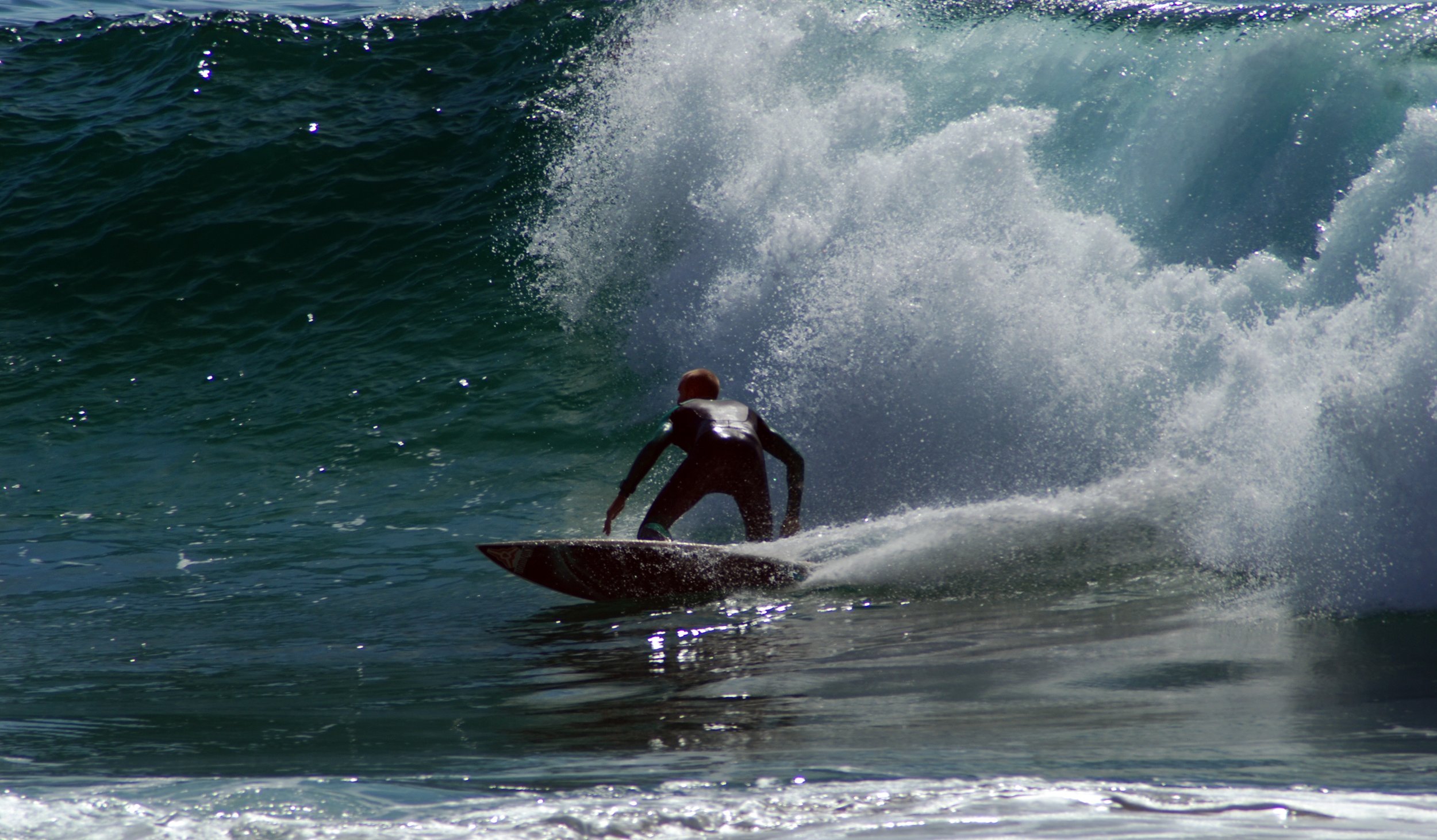Know your fins: are you ready to fine tune your surfing?
Published in Wavelength issue 220
Let’s get a few things clear; fins do not make you turn, just as tyres on a car won’t make the car turn. However, just like a tyre, fins affect how the board interacts between manoeuvres. The real part of your board which prevents you sliding out on turns is your rail. That’s why rail to rail surfing is seen as powerful and fast, because you’re utilising maximum grip in the water. Tail slides are only caused when your board is flat and therefore solely reliant on your fins’ grip. A slide used to be seen as poor surfing as it showed lack of control, but now, new age manoeuvres use this cavitation of the fins in a controlled slide and release manner.
So what do fins do? Well, they help the board’s properties - i.e. the concaves, rocker, plan shape and rails - to interact with one another and then in turn react with the water. Just like an F1 car’s slick tyres enable the car to harness the suspension, engine and downforce into grip and forward momentum. In effect, they have the final say. You shouldn’t be too worried about fins in your first few years of surfing. Would you really be able to feel the difference between a medium fin template with more flex or less flex, pc core, or solid fibreglass? Your wallet would! And although you might feel a little more confident with your favourite pro’s latest model in your mini mal, the truthful answer is you probably wouldn’t be able to feel the difference, yet.
There is a huge amount of information on fins on their respective manufacturers’ websites, going into huge amount of detail. So rather than repeating that here, I’ve listed a few simples rules for fins and their characteristics;
How many fins do you need?
Boards never used to have fins; it wasn’t until the early 1920’s that a keel was fitted. This introduction basically stopped the board from spinning around and gave it direction by causing drag and therefore grip at the rear. In simple terms, if you want a board to go as fast as possible, but have no turning ability, the fin should be placed off the tail. For maximum manoeuvrability, a fin in the centre will cause the board to spin. A single fin creates the most drive or forward speed due to the placement and lack of drag. If you want more speed shift it further towards the tail, more manoeuvrability then slide it further forward. The twinny obviously has two fins further up the tail, closer to the middle, and they give the board a skatey feel due to one fin anchoring while the other rotates around it, just like a drawing compass. The thruster gives the drive of a single fin, but manoeuvrability of a twinny. Whereas quads, which are like a twinny but with more drive due to the rear fins being further back, have a little less drag than a thruster due to the fins being correctly angled throughout rail turns.
Fin Template Basics.
Big guys should go for big fins, as they have more weight and momentum to hold in-between turns. Likewise, groms or light surfers should use small fins for the opposite reasons. Increase your fin size as wave size increases, and vice versa, to give you the appropriate drag. Wide bases of fins create drive and narrow tips create release. Upright fins (limited rake) have more pivot but less drive, curvier fins (raked) have good drive and hold.
Narrow tailed boards prefer flexible fins as the whole fin will be in the water as the tail sinks into the water more. Wide tailed or thick tailed boards prefer stiff fins as the tail won’t sink deep into the water so a stiff fin has the maximum area in the water. Flexy fins can give a feel of whipping into and out of turns, whereas stiff fins create a harder more controlled turn in my opinion.
So if you’re at a point in your surfing where you are starting to go rail to rail and you can “feel” your board when you’re surfing, then the world of fins and their many characteristics can fine tune your surfing. The best thing to do is find a demo centre and try them out; see what works for you before you buy. If you can’t, then check the many fin guides online with the major brands. As always, just be realistic in your own ability. Oh and don’t forget to check your fin screws before paddling out, as surfing with no fins really sucks!










Why do tail shapes affect the performance of your surfboard? What tail shape is going to best suit the conditions you're about to surf in? All these questions answered within, click to read more